The RTA [now Roads and Maritime Services] really wanted one of our two farms, the one we called The Swamp. They wanted it for a Pacific Highway upgrade between Kempsey and Macksville because it saved them having to build another long bridge, so we had a bit of bargaining power.
It was a reluctant sale for a large sum four years ago, but it did give me and my son Rod the opportunity to purchase a new 150-hectare farm at nearby Eungai and transform it into a cell grazing [managed stocking and paddock rotation] operation and continue to produce bullocks for the Japanese export market.
RELATED ARTICLES ON EXPORT:
-
Port of Newcastle set to be export hub for farmers
-
Winemaker focuses on valuable export markets
-
From paddock to Asia
-
Can the China boom last?
We sold The Swamp in March and bought the new farm in December the same year. It wasn’t neglected, but there were no internal paddocks and the yards needed a bit of work.
I still start at 5am six days a week, have an early breakfast with my wife Patricia at our home in Nambucca Heads and then drive 40 minutes to meet Rod for a day’s work on the farm.
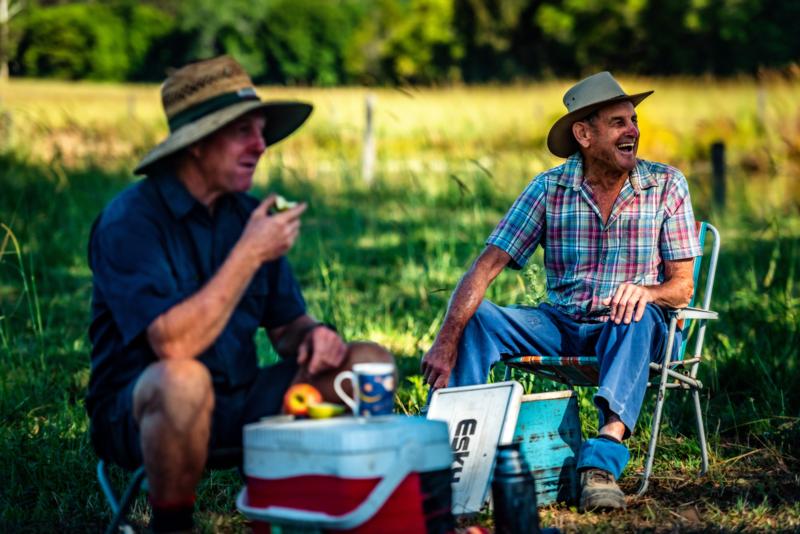 Clyde, right, and son Rod take a break on their Eungai farm for morning tea.
Clyde, right, and son Rod take a break on their Eungai farm for morning tea.
We were fortunate that something came up that was close to our other farm at Clybucca [about 20km south of Eungai], which we call the fattening paddock. That little farm is as good as it gets for finishing off bullocks in the Macleay Valley.
The 20ha fattening paddock carries up to 35 head and is used for finishing and reaching a live weight target of 650kg, or 300kg minimum carcase weight, for supply to Wingham Beef Exports in Wingham. We never overstock and can reach this weight target at 18 months of age.
The new farm now has 15 paddocks, modified cattle yards and has been subject to an ongoing pasture- improvement program of rock phosphate applications and rye-grass based pastures in winter.
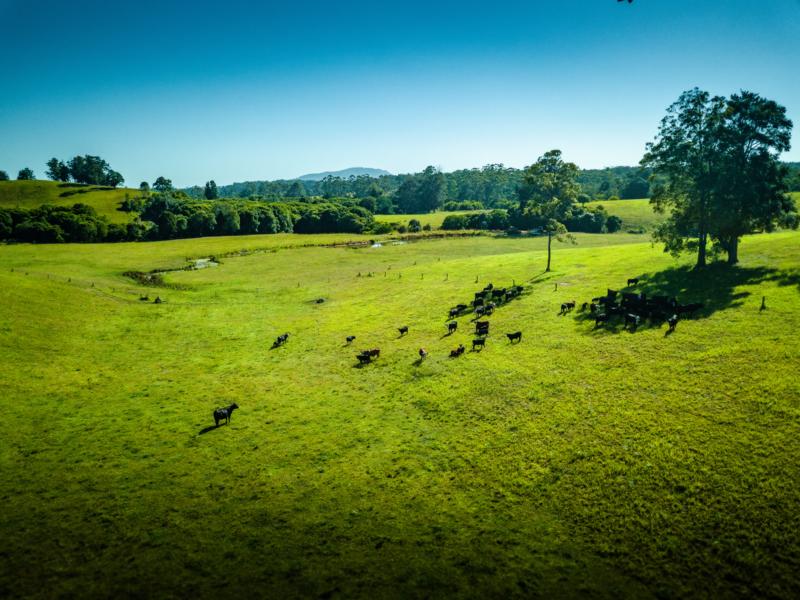 The Blairs’ 150ha Eungai property now has 11 pasture-improved paddocks.
The Blairs’ 150ha Eungai property now has 11 pasture-improved paddocks.
Soil tests showed the need for a boost in phosphate, calcium and magnesium and rock phosphate was chosen as an alternative to agricultural lime. A lot of this coastal country has low pH soils lacking phosphate.
Sustainability focus helps drive farm forward
It’s a team effort with Rod. We get along pretty well and Rod’s mechanical skills are very handy for maintaining our machinery. It’s a pretty simple succession plan that seems to be working.
RELATED: Family farm succession planning at Meryula
I am a third generation farmer myself and grew up on a dairy farm at Thumb Creek in the Nambucca Valley. Dad diversified into timber and got a bullock team going to supplement the dairy farm when I was about 13. I started helping out and loved it. I left the farm in 1950 to driving logging trucks and tractors.
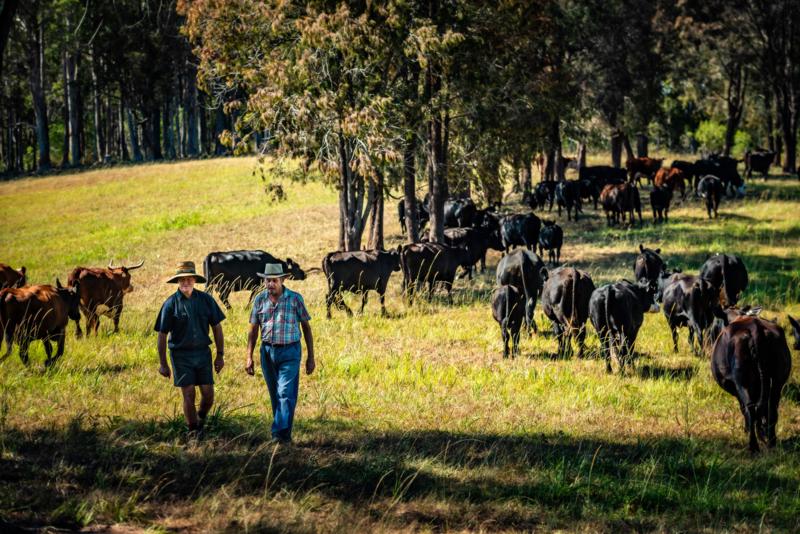 Clyde, right, and Rod check the herd on the Eungai property, which they have developed into a cell grazing operation to produce bullocks for the Japanese market.
Clyde, right, and Rod check the herd on the Eungai property, which they have developed into a cell grazing operation to produce bullocks for the Japanese market.
I spent the next 30 years “working in the bush” and saving to buy my own farm, which happened in 1978 with the purchase of The Swamp.
I am not claiming to be a silviculturist, but I do have some knowledge about selective timber harvesting and maintaining a sustainable forest system that can continue to produce quality hardwood timber for the next generation.
RELATED:
-
Reaping the rewards of biodynamic farming
-
Top investment trends in farm machinery
One of the reasons we bought The Swamp was there was a lot of timber on it, which we were able to harvest over time to help pay for it and the next farm.
“You don’t clear the bush to get timber, you select the best trees and let the forest regenerate the next load of timber.” – Clyde Blair
I branched out into earthmoving in 1980, building dams and clearing for farm infrastructure for beef and dairy farmers in the Nambucca Valley.
I made a lot of friends in that time. It might be hard to believe now, but I was once a shy man. I spent a lot of time working by myself in the bush, so I had a lot of catching up to do.
Many of those friends are fellow members of the local NSW Farmers Nambucca River Branch, which I have been a member of for more than 30 years. Our branch achieved a lot over the years. It was very active, we met every month and got stuck into lots of issues like water and native vegetation. We had a legendary branch secretary for many years, Geoff Gough, who led many a campaign to support the local vegetable industry.
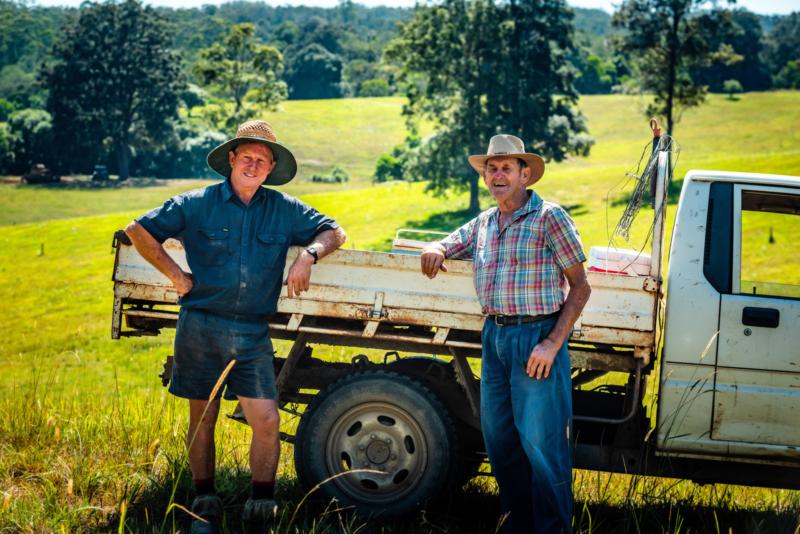 Clyde (right) on the farm at Eungai with Rod.
Clyde (right) on the farm at Eungai with Rod.
I have no intention of slowing down anytime soon. I do get to enjoy ocean views and the occasional Sunday off relaxing with Patricia at our home in Nambucca Heads. I can watch the whales from there.
We bought it more than 50 years ago and have lived there ever since. I guess I already have my retirement home if it ever happens.
Patricia and I have been married for 61 years. We met at a dance where she was the piano player. I could not have done all of this without her, and I am certainly not still running around at this stage because of a poor diet.
Rod Blair, 60, has followed his father’s lead – trying his hand at a number of jobs before returning to the farm.
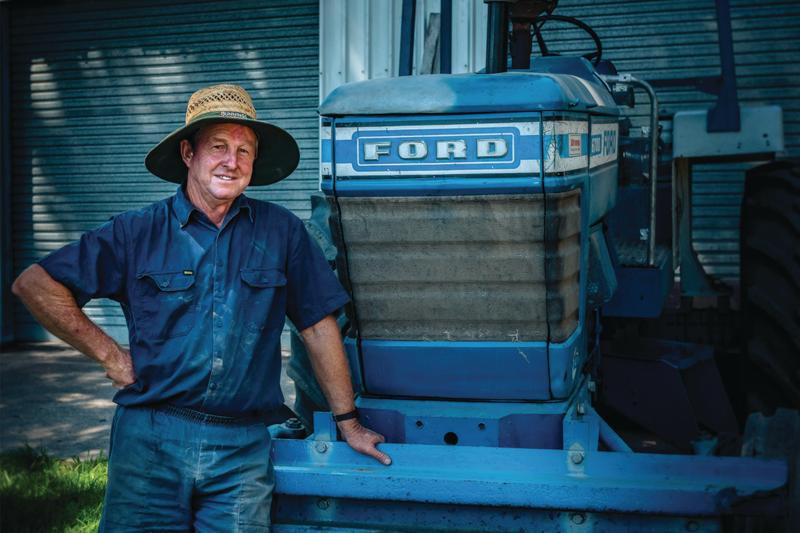 Rod Blair is a jack-of-all-trades with experience in many agriculturally-relevant lines of work.
Rod Blair is a jack-of-all-trades with experience in many agriculturally-relevant lines of work.
I returned to farming 10 years ago after a career involving timber harvesting, a mechanics apprenticeship, meat processing and heavy machinery – all of which have been handy skills to have on the farm.
“Like Dad, I started in the timber industry at the age of 13, although I was working on a dozer and not a bullock team, and could do a full day’s work on my own by 15.” – Rod Blair.
It’s good being back on the farm. It’s versatile and there is always something to do. Some of my jobs have been repetitive, but this is certainly not.
Being chief mechanic on the farm keeps you busy. We do like to keep the older machines like our two Chamberlain tractors going, but we are adopting new practices such as solar pumping to distribute livestock water and a circular design for the timber cattle yards.
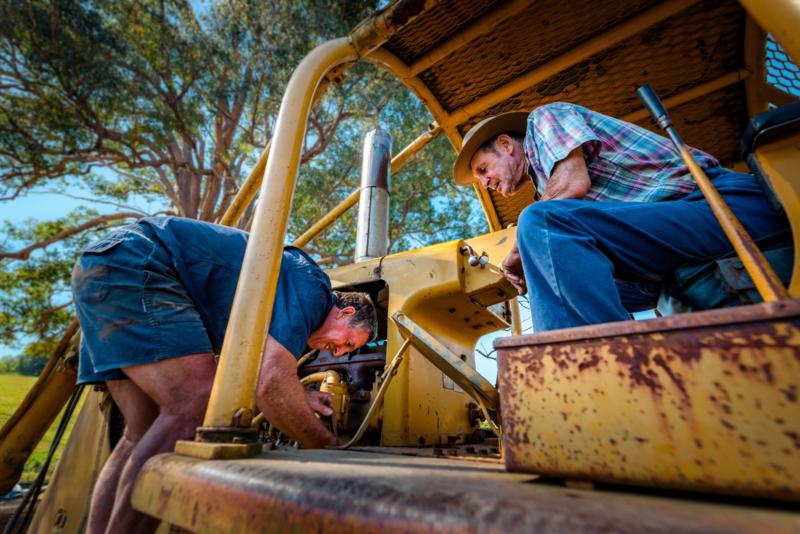 Rod says being chief mechanic on the farm keeps him busy.
Rod says being chief mechanic on the farm keeps him busy.
The circular design has been a great move. The cattle are so much easier to handle, it is definitely safer and I can do it myself.
RELATED ARTICLES ON BEEF FARMING:
-
New meat quality labels beef up
-
26-year-old silage offers cattle farmer drought relief
-
Angus beef farmer smashing the supply chain
-
160 years of farming with Booroomooka Beef
We are also trialling a monthly mineral supplement injection with the aim of improving growth rates and reproductive performance.
We can now carry 140 head, including 90 Angus crossbreeders at Eungai, while 30 to 35 head are finished off on kikuyu pastures on the “fattening block”.
The 50-year-old Caterpillar bulldozer still going strong
Clyde Blair and his trusty 1967
Caterpillar DH8 have clocked up more than 40,000 hours in the Nambucca Valley.
Purchased in 1973 for $35,000, Clyde’s “tractor” has forged countless access roads for selective timber harvesting and built hundreds of farm dams for local farmers.
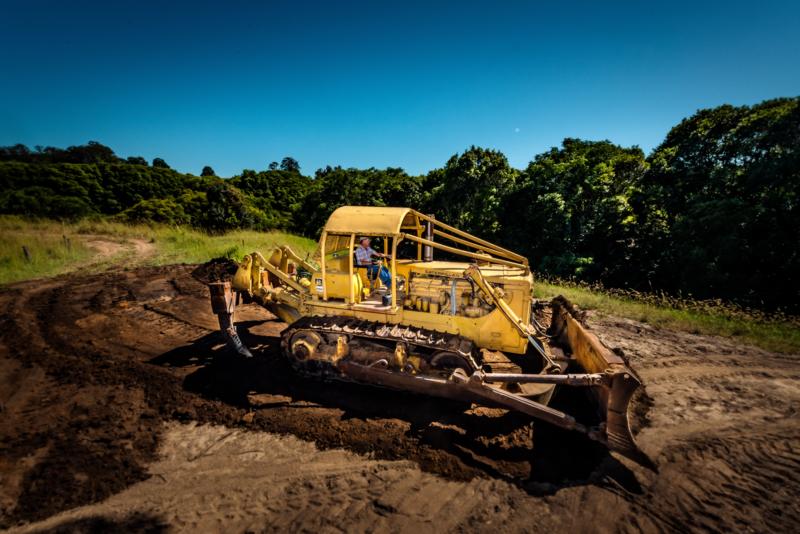 Clyde operating the 1967 Caterpillar DH8 he bought in 1973.
Clyde operating the 1967 Caterpillar DH8 he bought in 1973.
“The owner of Thora mill bought it for $68,000 in 1967 and I drove it for five years before buying it myself,” Clyde says. “It was a beautiful machine and still is.
“It was big investment back in those days. Luckily the mill owner financed me. It took a few years to pay them off, but it was much better than borrowing from the bank, and any profits were invested back in the machinery and equipment. When the tractor was paid off, we bought another farm.”
According to Westrac, the Caterpillar dealership for NSW, a similarly fitted machine today would cost between $980,000 and $1.1 million.
“This tractor has done so many different jobs,” says Clyde. “I remember one dam only took two hours to do and another took 500 hours.
“I loved the challenge of putting roads in inaccessible places to get access to get timber. I did that many, many times and the royalties from timber helped many farmers establish their beef and dairy farming operations.”
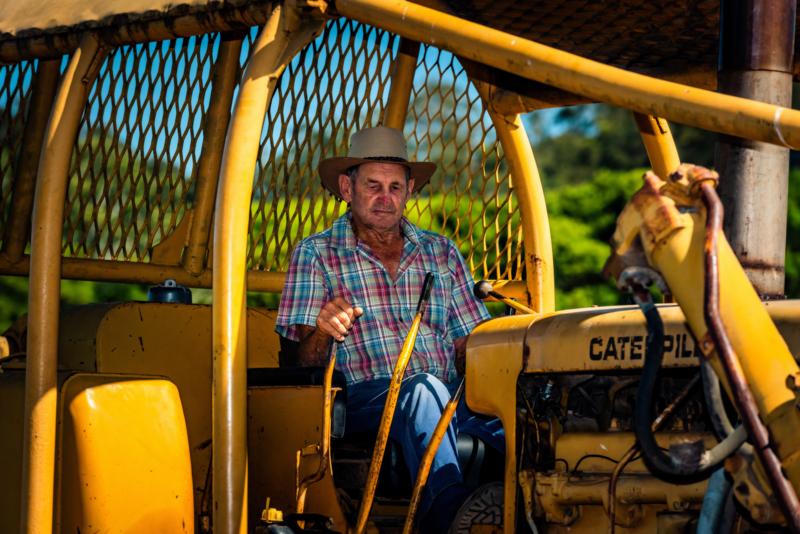 Clyde operating his beloved dozer.
Clyde operating his beloved dozer.
The secret to building a good dam on the North Coast, says Clyde, is site selection and the colour of the soil material.
"If it’s a yellow clay or a white shale, it will hold water. If it’s red or brown, leave it alone.” – Clyde Blair
The cut-off trench or keyway is critical and that’s where you need a good excavator operator to get down to the right material for the trench.”
Clyde stopped earthmoving 10 years ago to concentrate on rebuilding a farming operation with his son Rod. Like Clyde, the Caterpillar “just keeps going and going” and has helped enhance production on their two farms.
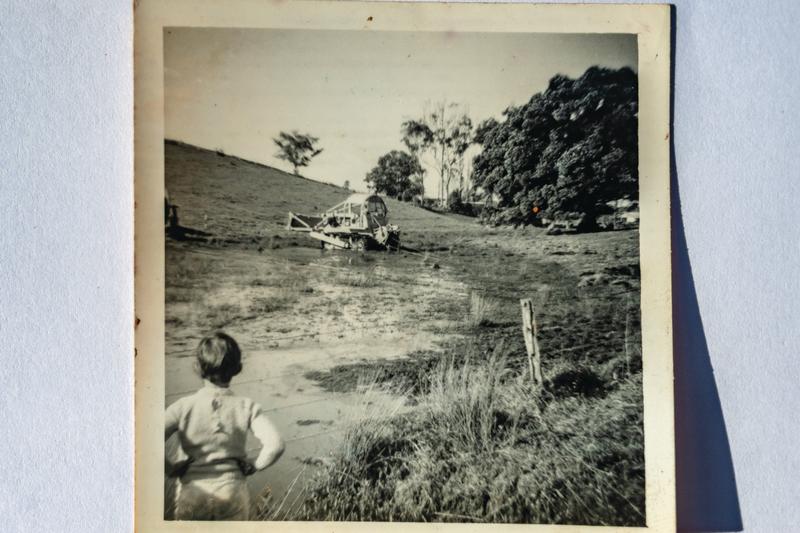 Clyde’s son Rod as a young boy watching the Caterpillar at work. Supplied by: Clyde Blair
Clyde’s son Rod as a young boy watching the Caterpillar at work. Supplied by: Clyde Blair
“He still likes to invent jobs for it,” Rod jokes.
For the past two years, the DH8 has been a showpiece at the Rusty Iron Rally in Macksville, a major event for tractor and engine enthusiasts.
“People ask how I keep it looking so good,” says Clyde. “I just say if you like something well enough, you’ll look after it. I learned how to get the best out of machine. You have to be efficient in how you operate it, so it does make you money. But I never thought I would still be using it after 51 years.”